Kenwood’s legendary KD-500/KD-550 direct-drive turntables are classics from an era when things were built to last.
Indeed, if decks like the KD-500/KD-550 with this level of custom engineering were manufactured now, they would cost many, many thousands of dollars. The Technics SL-1200 is a classic example – it’s recently been reissued and costs thousands. This is one reason I love these Kenwood decks and others like them.
I’ve written many Kenwood KD-500/550 articles. Don’t forget to also check out my articles on the Kenwood KD-600/KD-650 turntables, just about the best direct-drive decks from Kenwood, apart from the legendary L-07D.
The only difference between the KD-500 and KD-550 is in the tonearm. The KD-500 came without an arm from the factory, while the 550 was supplied with a Kenwood arm. The idea was that you would then fit your favourite Grace G-707, or perhaps an SME Series 2 or 3 to the KD-500.
Kenwood KD-500 Specifications
Courtesy of Vinyl Engine
Drive: direct-drive system
Motor: 8-pole 24 slot brushless DC servo motor
Platter: 30cm, 1.5kg aluminium alloy die-cast
Speeds: 33.33 and 45rpm
Wow and flutter: less than 0.03% WRMS
Signal-to-noise ratio: more than 60dB
Tonearm: static balance type, s-shaped pipe arm
Effective length: 237mm
Overhang: 15mm
Tracking force range: 0 to 4g
Usable cartridge range: 5 to 12g
Dimensions: 502 x 382 x 162mm
Weight: 14.9kg
Engineering
Nothing from Rega or Pro-Ject comes close to the level of precision engineering included with a KD-500 or KD-550. Most contemporary turntables pale in comparison. It’s almost as though they come from different universes and they really do, no matter what the salesperson might tell you.
The deck in the pictures here is a KD-500 and therefore has a non-Kenwood arm. These Kenwood direct drive decks have a chassis made from Kenwood proprietary ARCB synthetic granite. The motors are a custom, high-torque design, the tonearm on the KD-550 is also a Kenwood custom design. More on this custom engineering, below.

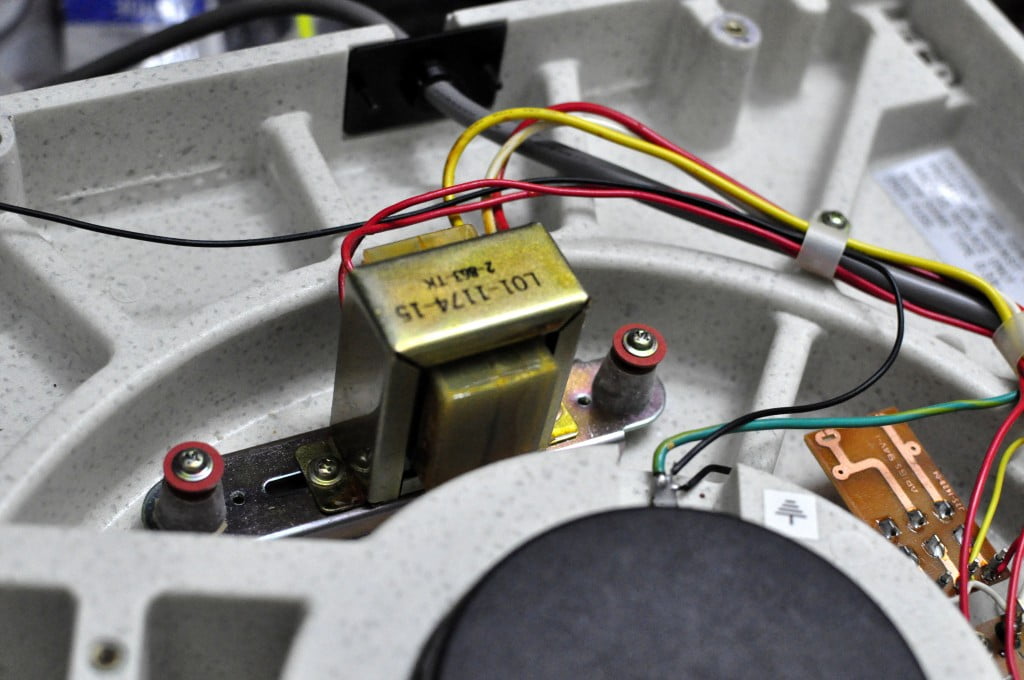

Motor
The KD-500/KD-550 feature custom-manufactured direct drive motors. This is a world of precision apart from the puny AC clock motors you find in Rega or Linn decks and is exactly what the Japanese do best – impeccably designed well-executed custom engineering.
Belt-drive decks cannot compete with the speed and pitch stability imparted by direct-drive motors like those found in these Kenwood turntables. This becomes apparent as soon as you play a record.
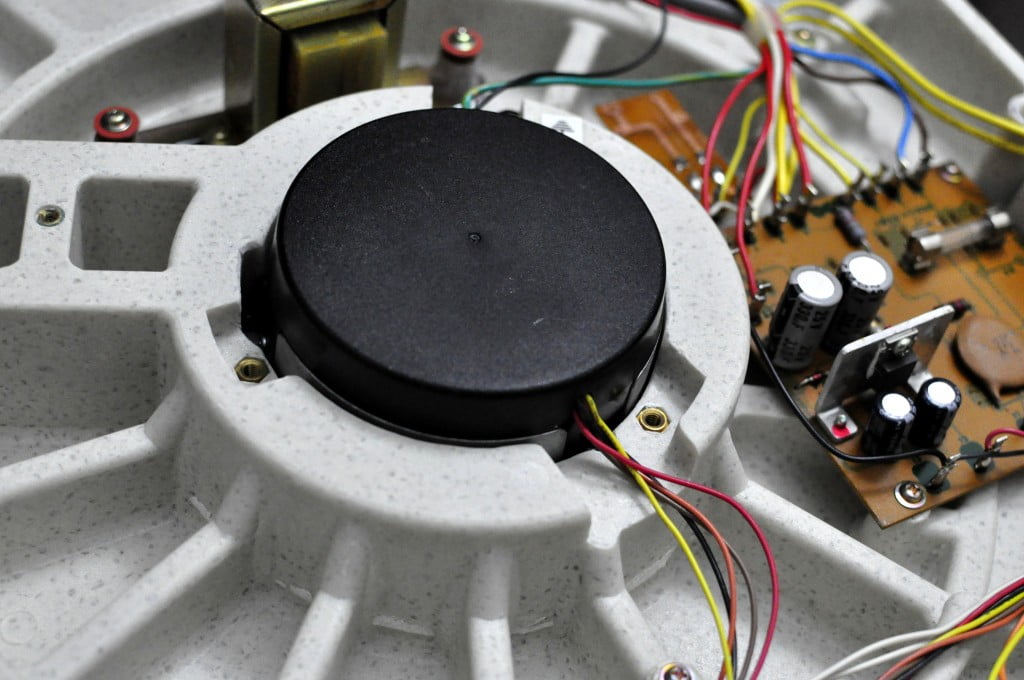

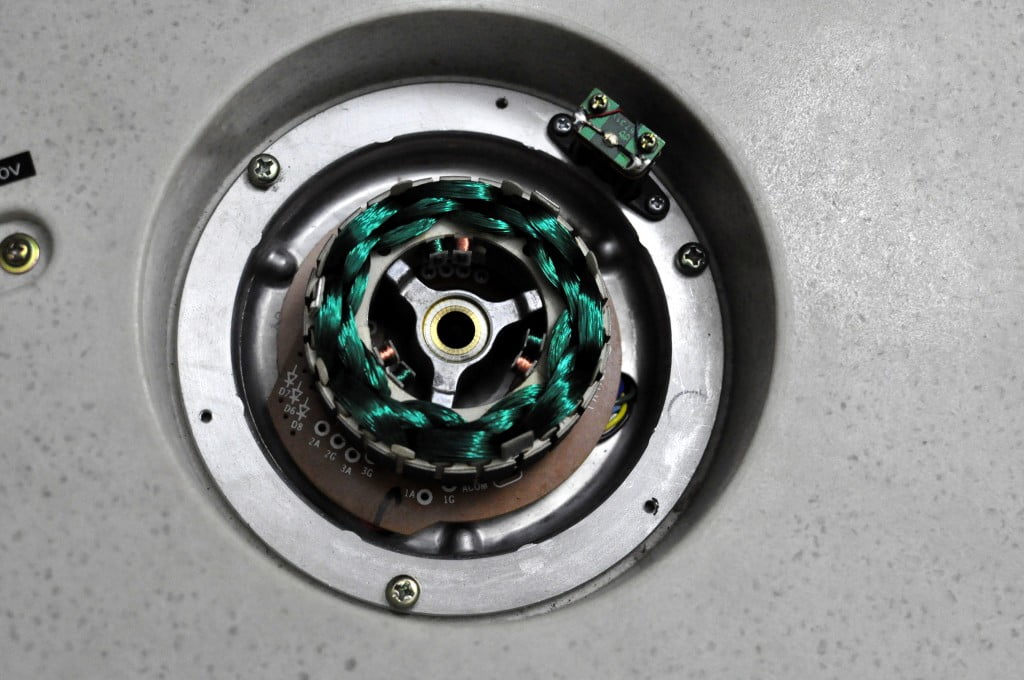
Chassis
Another area where the Kenwood KD-500/KD-550 excels is the chassis or ‘plinth’. This is not a plinth made of wood or chipboard like many other decks. Instead, the Kenwood plinth is made from a synthetic marble, or granite, called ARCB.
ARCB is a resin-impregnated composite. It looks and feels like marble and is a material Kenwood became well-known for. Many customers still whisper about the “marble turntables” when they see Kenwood decks here in the workshop. Possessing excellent strength and damping properties, ARCB can also be moulded into complex shapes, like the KD-500/550 chassis for example.
With the extraordinarily high costs needed to set up production, it’s unlikely we will ever see custom materials engineering like this again in turntables. If you look at the featured image at the top of this page, you’ll see the attention to detail in the heavily ribbed under-chassis. All this was designed to dampen and minimise resonance in the deck.
The platter on the Kenwood is nice and solid, weighing around 1.5kg. It’s not a heavyweight platter, but the deck weighs around 15kg which these days would put it in the massive category. Rumble is around -70dB and wow and flutter sit at around 0.03%, very good figures even now.
You can see a few more pics of the KD-500 at The Vintage Knob.
Service
One thing I always do when a Kenwood KD-500/KD-550 comes in for service is clean and lubricate the bearing and motor. These motors were designed as sealed-for-life units. It turns out that the folks who designed the deck and wrote the service manual underestimated how long these wonderful turntables would last!
These days, unserviced motors are very much in need of a fresh dose of special synthetic bearing oil. This helps any deck run more quietly and often better than new due to improvements in lubricants. This is best left to a specialist as there are various things to break for those unfamiliar with the job, like the speed sensor I’ve often seen broken on these machines.
By specialist, I mean someone who knows and understands the intimate details of how to get these decks running well. That means not only what type of oil to use and how much, but how to get it into the bearing, how not to leave any dust, lint or other contamination behind, how not to break the sensor shaft, how to set deck master speed adjustments, and so on! I use a special synthetic bearing oil, designed specifically for this type of sintered plain bearing, for example.
Speed issues can crop up on the KD-500 or KD-550 and are also usually easily resolvable. There are master speed adjustments with can and should be made where necessary, to bring the user-adjustable verniers back within their normal range, close to their centre point. This is again an almost always overlooked piece of maintenance.
Mechanical parts are of course no longer available, so be careful if you are planning on doing this yourself. Electronic parts are available though.

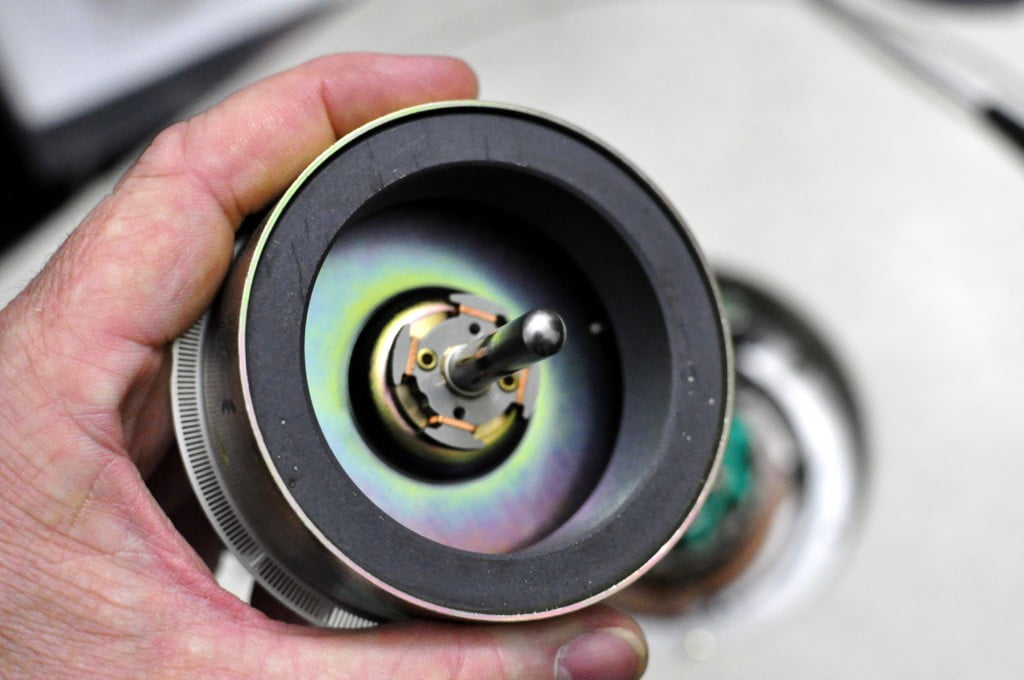
I should also mention the Kenwood KD-600/650 direct-drive turntables. These are even better ARCB decks from Kenwood. I own one of these and it is a superb deck. Mine came with a gorgeous SME Series 3 tonearm.
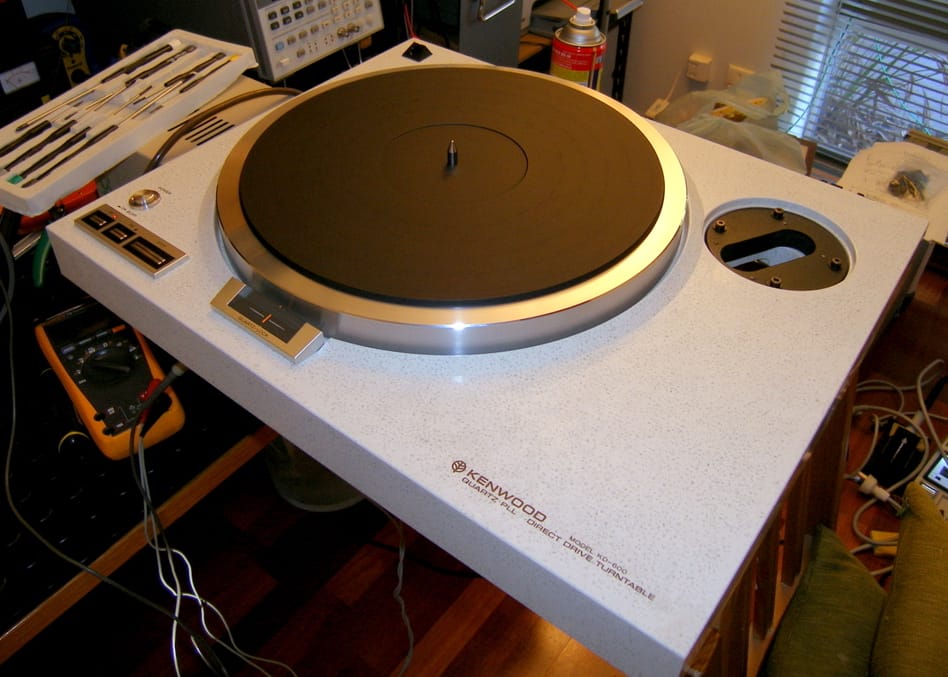
Performance
The KD-500 and KD-550 are a delight to use. Being fully manual decks, you get to raise and lower the arm yourself, cueing the lead-in groove and returning the arm to rest at the end of a record. This is proper turntabling and, because it’s manual, nothing interferes with the tonearm and its ability to extract information from the groove.
Simple push-buttons select the speed and there’s a handy strobe to help you get that spot on. This is not a quartz-locked deck, rather the speed is referenced to the mains frequency of 50 or 60Hz, depending on where you live. Because of the massive chassis and compliant feet, the deck is pretty well isolated from external noise and vibration. Even so, you should always mount a deck on a dedicated shelf, preferably wall-mounted.
This is a very nice-sounding turntable. It gets out of the way and plays records, exactly what you want and exactly what cheap modern decks find it hard to do. With a good arm or the Kenwood arm in the KD-550, the bass is deep and controlled. Midrange and treble are smooth and non-fatiguing. The sound staging is excellent. Being direct-drive machines, pitch stability is of course also excellent. Just find a good cartridge to match and you’re all set.
The Bottom Line
If you want a manual deck with a huge bang for the buck and cool retro looks, look no further than the Kenwood KD-500 or KD-550. These are excellent decks and certainly one of the best mid-range decks from this period.
If you need yours serviced, I look at many of these decks and can quickly and easily get yours running at its best. I can recommend, supply and fit a suitable cartridge, and I’m very familiar with all the little tricks needed to get these machines running perfectly.
Contact me for more details and don’t forget to check out my other KD-500/KD-550 articles.
Discover more from LiQUiD AUDiO
Subscribe to get the latest posts sent to your email.

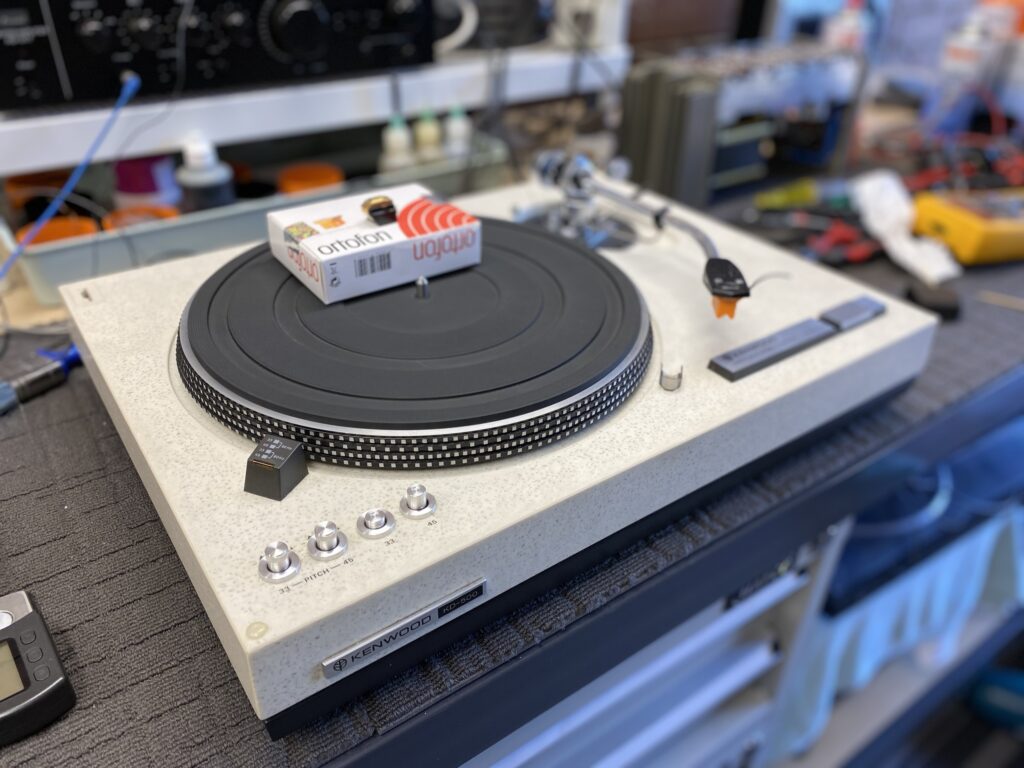
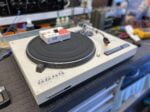
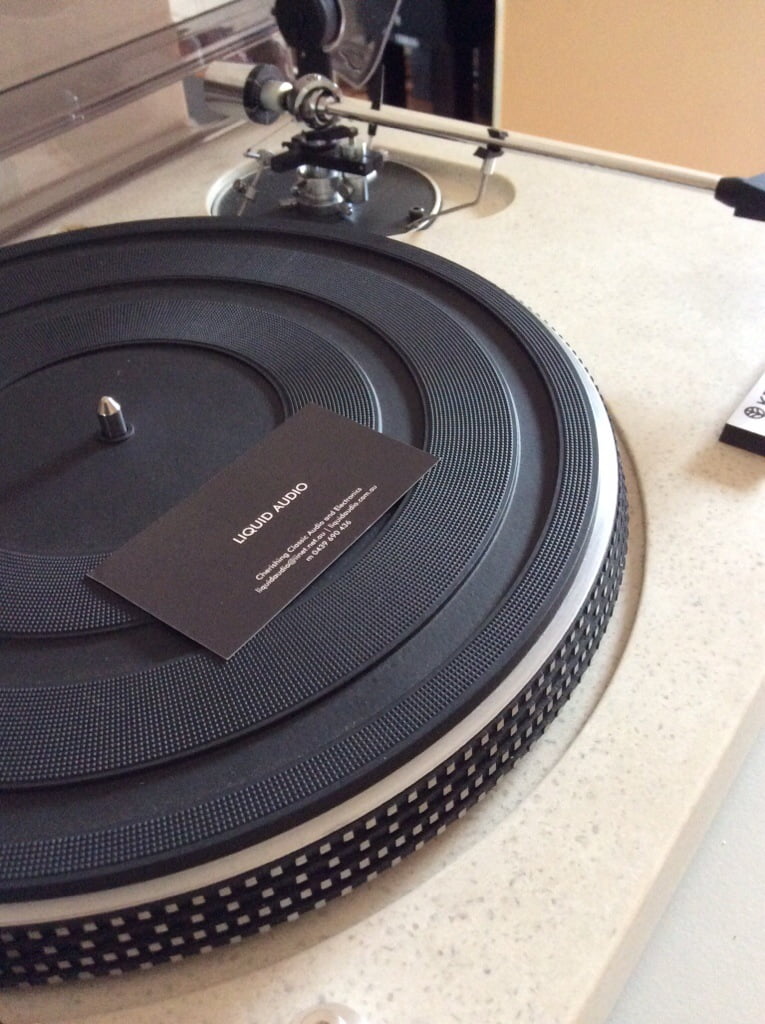
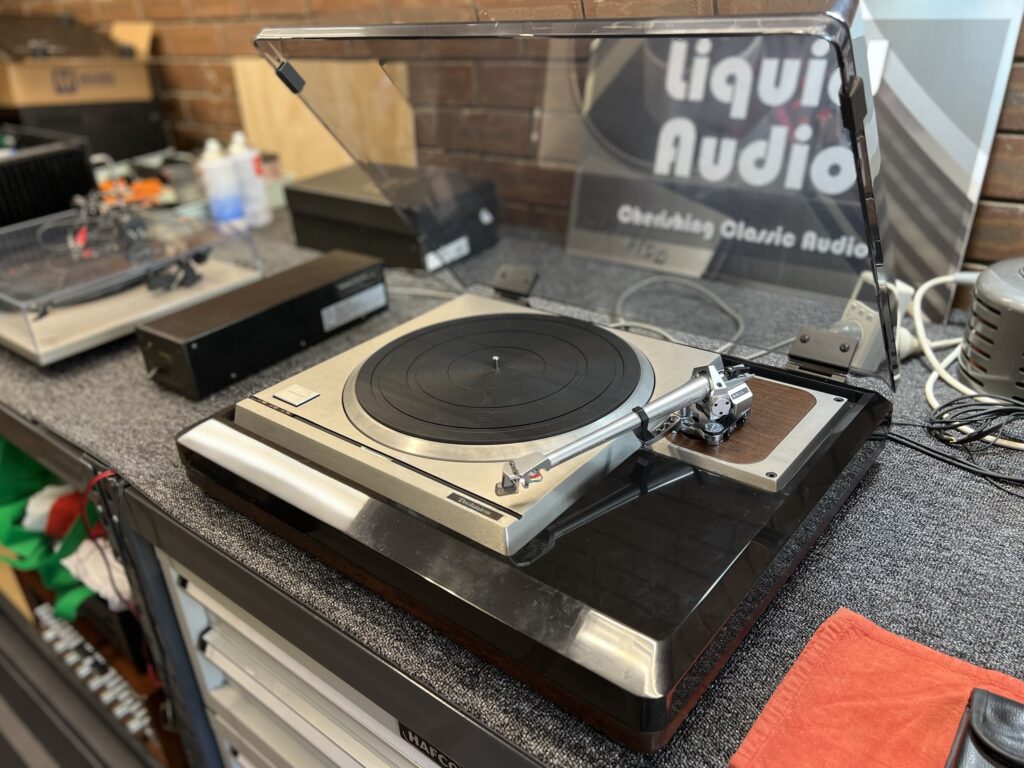
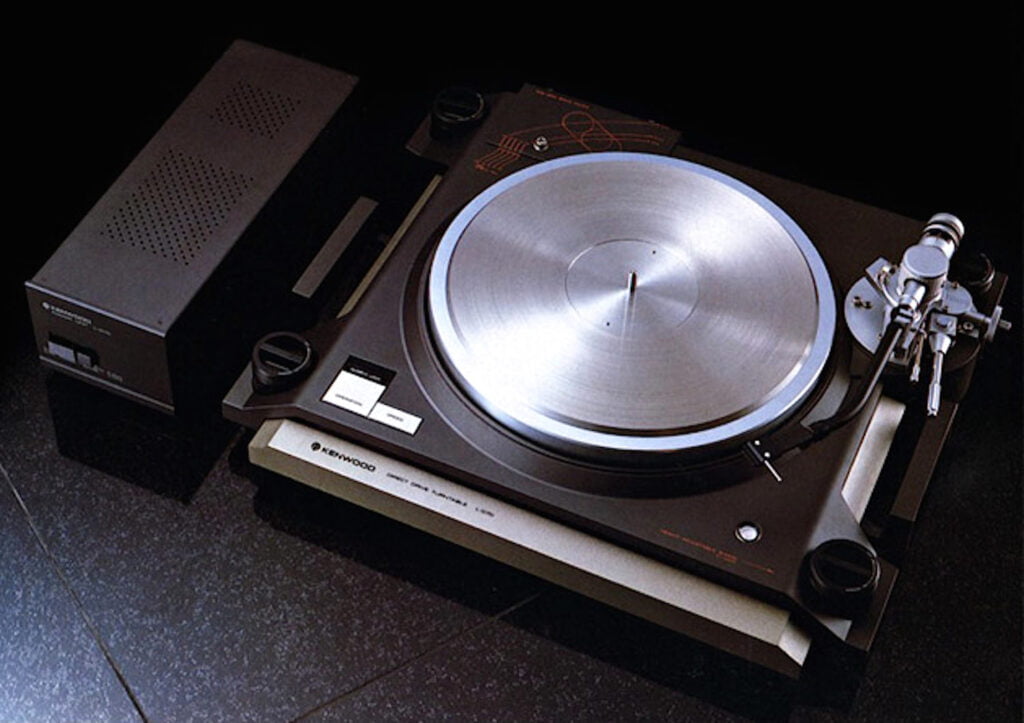
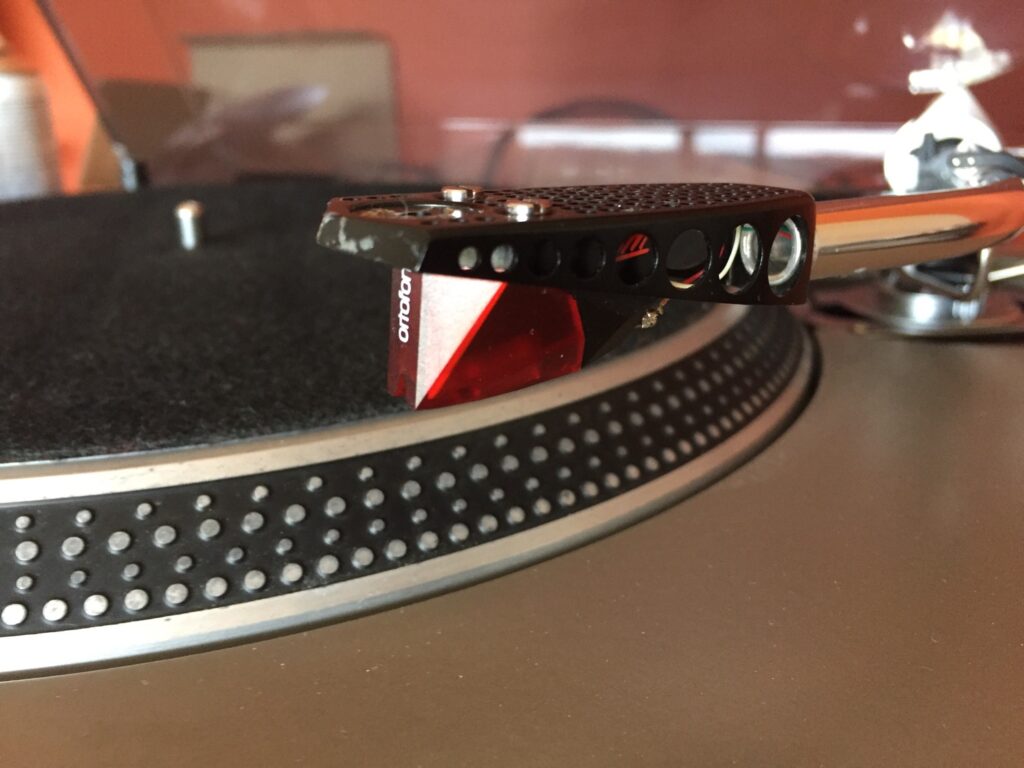
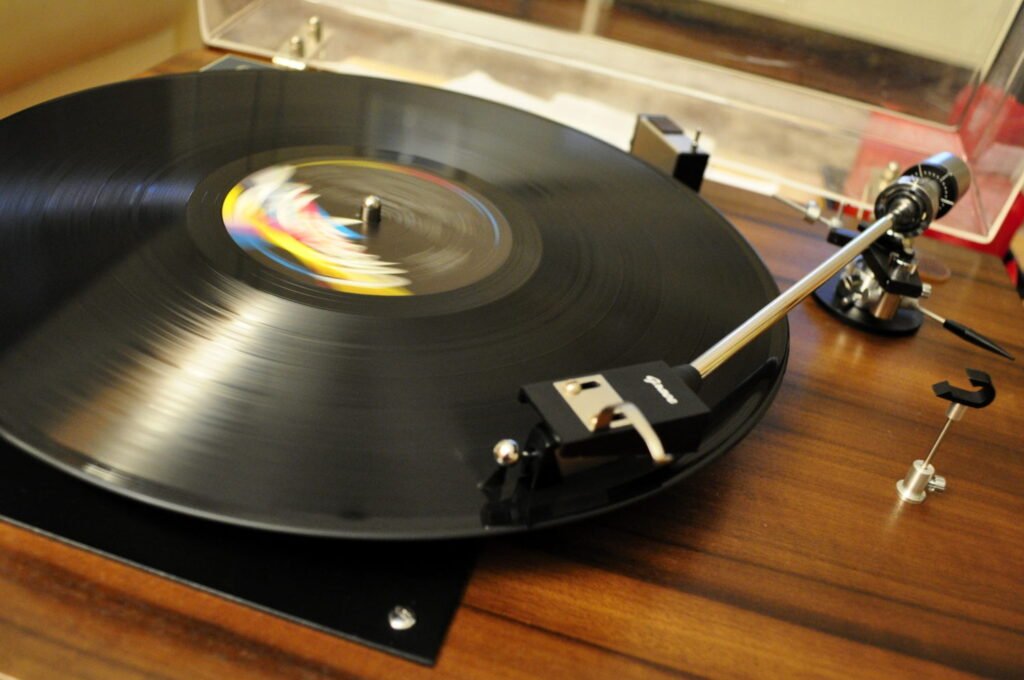
The model is well designed. But it is much similar to Technics SL 1200. Besides, I believe it has some issues with the motor. The motor is not upto the expectation mark and can not maintain accurate speed.
The model is well designed. But it is much similar to Technics SL 1200. Besides, I believe it has some issues with the motor. The motor is not upto the expectation mark and can not maintain accurate speed.
Hi Rifat, the KD-500 is quite different from the Technics in many ways actually. There are no issues with the motor that I have encountered and I have serviced many of them. In fact the motor is excellent and maintains very accurate speed!
Hi from Santa Fe, NM USA
Have a KD-500 that no longer spins accurately fluctuates between 1/2 speed and 3/4 with pitch control turned all the way up. If I follow the procedure above would that fix it or should I be looking to do something else?
thanks
Hi Jim, I briefly stopped in Santa Fe on my trip from NYC to San Diego, wonderful train trip. I’m not sure what procedure you are referring to but the deck needs service. If you are handy on the tools, you could try opening her up and cleaning the speed controls and associated trim pots on the control board, but there may be other problems causing the speed woes. Perhaps there is someone local you can take it to?
A simple fix can be changing any electrolytic caps.. Always good to remove then and check there capacitance. 10% below should be changed.
Thanks for your comment Mark. I appreciate those trying to assist others, but given that your comment highlights general misinformation regarding technical electronics repair and only encourages capacitor replacement rather than finding and fixing the issues, it’s helpful if I explain why.
Capacitors are much maligned and generally poorly understood. Capacitors should be checked, but rarely cause speed issues with these decks for example. New caps are typically specified to be within +/- 20% of rated capacitance, like these excellent Panasonic parts for example https://industrial.panasonic.com/cdbs/www-data/pdf/RDF0000/ABA0000C1209.pdf.
A reading of within +/- 20% is within new part specs and measurement error. Replacing capacitors that measure within 10% of spec is not only a waste of time and money, but it will not fix anything unless those parts also have a measurably high ESR.
Most end-users also don’t have the equipment needed to make these measurements accurately, or the experience to interpret the results and therefore should definitely not remove or change parts they cannot properly measure and assess.
Hi,
Where would you put the KD-3070 in the Kenwood lineup?
I missed out on a KD-500 recently but now a 3070 popped up for sale in my area
Thanks
Hal
Hi Hal, certainly not as good a deck. What you really want is a KD-600 or 650 – these are both awesome decks and considerably better than the 500. Regards, Mike.
Hi Mike,
Thanks for your advise. Much appreciated by this ignoramus.
I have this notion (probably foolish) to find a Kenwood turntable that will match up in relative performance and cost with my Kenwood KR-A4080 receiver/amplifier.
Which Kenwood turntables should I search for?
many regards,
Hal
Victoria, Canada
Hi Hal, it’s a good idea to always try to have the very best source components you can afford. If you are looking for a Kenwood then it makes sense to try to find a KD-500/550 or 600/650. You can then keep this as other parts of your setup change. There are other Kenwood decks of course, so much depends on your budget. Regards, Mike.
Hi Mike,
I finally managed to hook a Kenwood KD 3070 turntable to match my Kenwood amp.
The unit is in top shape both visually and technically but it needs some attention regarding the too quick arm return even on the lowest speed setting.
I understand there is a spinning wheel in an oil pan involved that slows down the arm return motion.
I have ordered the 100,000 wt silicone oil that should be in the pan but have no idea how to get the oil into the pan. Is there a procedure that you could recommend?
Or perhaps it is obvious once i get under the hood?
Many thanks,
Hal
Hi Hal, I suggest you get a copy of the service manual if you plan on doing any work like this. The mechanism should be fairly self-explanatory once you open her up, but a manual is invaluable when performing any sort of work like this. Regards, Mike
I’m an original owner of a KD-500, hoping to return it to service after 15 years of storage. What is a brand name of a suitable “synthetic bearing oil”
Hi Lance, I will be selling a suitable oil via my website fairly soon hopefully. Regards, Mike.
Great article, great turntable. I recently unboxed mine which had been in storage for 20+ years, hoping it would still work. It did initially, but the strobe indicated it was having a problem keeping a steady speed. Thinking it might “loosen up” with time, I left it running overnight. The next morning I got up and noticed an odor that reminded me of the old adhesive medical tape commonly used years ago. It didn’t have the usual electrically “somethings burning” smell. I realized to my chagrin that the motor was no longer spinning. I have checked the voltages per the schematic (U.S. version with L01-1171-15 transformer) and didn’t find anything amiss as far as I can tell. The output to the motor between terminals 12 and 13 reads 18.3vdc. A quick check of the internet shows part are going to be hard to come by. If it’s the motor, I’m probably the proud owner of a formerly working KD-500 with Grace 707 arm. You seem to be the most knowledgeable person I’ve run across on the subject, but shipping the turntable to and from Australia would probably be cost prohibitive. Any ideas or suggestions?
Hi LC, thanks for writing. Unfortunately the only advice I can give here is that someone knowledgable needs to look at the old girl to determine what might be wrong. It could be a case of some dead capacitors after this amount of time without power. They usually need to be reformed, rather than have full mains voltage applied immediately after such a long storage time. Given that she is dead now though, she will need some proper attention, unless you feel capable of removing and replacing all the electrolytic capacitors and seeing if that fixes the issue.
Thanks for the reply, Mike. The rotor initially wants to move when I turn the power switch on, but it’s not a sustainable motion. Replacing the capacitors may be do-able if I can find replacements. The situation seems more hopeful if the caps are more likely to be the culprit than a motor that’s died. I see no visible evidence of overheating on any of the components or in the motor. Is there any way to read-out the stator windings and, if so, what values should it read? Thanks in advance.
Replacement capacitors are easy to find and definitely the way to go initially. Beyond that, you need test equipment and the knowledge to use it. You could test each of the stator windings for continuity, but you might be best to take her in to somebody who fixes electronics in your area and who knows turntables.
Belo trabalho
Hi Mike, great to read this article. I have a UK ‘Trio KD500’ version, as you may know they were rebadged in the UK because Kenwood was a well known brand of food mixer. I bought it new in 77/78 when I was working in a hi-fi shop, at a staff discount price, and fitted it with a SME 3009 arm. I never gave up on vinyl so it’s been in use for almost 40 years and never been serviced. It still works and sounds great through my contemporary Technics SU8600 amp and JBL L36 speakers. I must confess I am astounded at the quality and reliability of this great turntable, my amp has just had to have some transistors replaced and the speakers have been reconed once but the deck just keeps going. I play a lot of records, it must have clocked up at least 5,000 hours use, maybe twice that. How wonderful to buy a piece of equipment as a young man that has given me so much musical pleasure and may well see me out, I am in awe of the Kenwood designers, engineers and assemblers. Your piece explains a lot, best regards, Mick
Just bought this Kenwood without arm and cartridge. I want to better my Thorens TD 320. What arm do you advice?
Hi Charles, lots of options there so it’s probably best if you give me a call to discuss your options and budget in more detail. Details on my homepage! Regards, Mike
Sorry Mike, I live in the Netherlands.
Ah, no problem. So you have lots of good options including the legendary SME 3009, the Jelco SA-750D I’ve reviewed elsewhere on my site or even a Rega arm. You’ve just got to make a suitable armboard and you are good to go!
I have a KD550 with a stock Kenwood tonearm. What cartridges do you recommend?
Hi Johnny, it all depends on your budget, and of course then finding a good, medium to high compliance cartridge within that budget. What ballpark are we talking?
Budget is always a hard question for me. I don’t have a lot of money to spend, but I have been pretty lucky buying used gear. I have a Shure v15type4, a Pickering xsv 3000 and a Ortofon 15ff mkii. I guess I want to know if what I have is a good match (it sounds good to me, but maybe it’s because it is all I have heard) or what I should be keeping an eye out for?
Thanks,
Johnny
Hi Johnny, hard question maybe but essential for me to know to be able to advise you! The Ortofon is a very basic cart, I would avoid using that. Likewise the Pickering is not one I favor. The Shure is the best you have mentioned there, but you can of course do better, depending on your budget. It’s also important to consider MM vs MC – again your budget will determine the best way to go here as very cheap MC carts are not worth owning. The key is finding a cart with the right compliance and sound at a price you can afford. Naturally you can do much better than the carts you have mentioned here in both vintage and new, but the Shure, with a good JICO or genuine stylus is a good starting point. A cheap or generic stylus will kill it sonically, so watch out for this.
Thanks for taking time time to help me with this. I also have a grado m+ (Uses a silver stylus). If a couple hundred dollars is in my range, is it better to put that money into a better stylus?
Thanks again,
Johnny
No problem. The issue is that you’ve got a lot of very basic cartridges here. The problem is that, when you spend say $50 or $100 four or five times on not very good cartridges, you have four not very good cartridges that you’ve spent decent money on! I suggest selling them all and getting something better. Two hundred bucks though doesn’t get you much but, if that’s the limit, sell everything except the Shure and put a decent stylus on it. If you can stretch to an Ortofon 2M Blue which is a little more than $200, this might be a better option. But if you can spend a bit more, you’ll get much better results.
I have a KD-500 Bought in the 70’s and put a Magnapan tone arm with MC cartridge. I had a Sota Sapphire TT for a while but sold it, knowing I had the KD-500 in reserve, butI have not ben able to use it in years due to it will not hold speed. A couple of times I have tried to have it serviced and I was told with out a schematic for the electronics I was out of luck. Any ideas?
Hi Allan, yes it sounds like it definitely needs a service and some attention. I’d definitely need to have a proper look at her to be able to advise further, but if you are local, I strongly suggest you book her in for an appointment! Regards, Mike.
Cartridge recommendations? $100-200 and $2-300 range.
Hi Mike, I have actually already written a detailed reply to your query about this a few days ago on the KD-500 / 550 motor service article. Did you perhaps miss that?
Yep! Thank you.
Hi Mike,
Thanks for this informative article, it played a large part in my decision to purchase a KD 500 recently. Thus far the only issue I can find with my new deck is that the neon strobe lamp is broken. I thought I’d found a proper replacement part (B30-0117-05) from an online electronics dealer but unfortunately they reached out to me after I’d ordered and let me know it was no longer available. Do you have any specific recommendations for a suitable replacement?
Hi David, thanks for writing and I’m glad you found the article helpful. Regarding the neon, I’d need to have an original neon here in order to measure it up and cross reference a suitable replacement. I suggest you do that and try the usual commercial suppliers like Mouser to see what they have. A quick check at Mouser shows around 30+ neon lamps. You’ll need a size and voltage match, so it would be a good idea to measure the voltage across the neon to check that and make sure there is a voltage there and that the neon is in fact dead. I hope this helps!
Thanks for the prompt response! Unfortunately I can’t measure the original neon because the glass bulb was broken so that only the two inside elements are sticking out above the plinth. It looks as if someone tried to replace the bulb from above rather than removing the base of the table to access it from underneath and they broke the bulb in the process. Ah well, I’ve used an external strobe set at 60hz to check the platter speed and it appears to be keeping rock solid rpm so at least I’ll still be able to use the table.
Hi Mike, Great review! I’m considering an upgrade from my Project Debut III + Ortofon Blue and came across a nice KD500 paired with a Michell Tecnoarm and a AT-VM95ML cartridge for $1,600. Seemed expensive at first, but the tonearm is highly revered from what i’ve read. For a fraction of the price, I can also put my hand on a Thorens 145 MkII at $800, a Lenco L75 at $559 or a SystemDek III at $549. All fully serviced. I would really appreciate your thoughts!
Hi Gillaume, glad you enjoyed the review and good work on moving away from the Project deck. You’ve mentioned four very different decks here, each has strengths and weaknesses. Much also depends on what cartridges and arms these decks are fitted with and all are classic machines in their own right. I’ve worked on all of them except the Systemdek, which also should be very good and maybe even the best value based on the prices you’ve mentioned. The TD-145 is typically well-engineered and always plays a record well. The KD-500 is legendary of course. The only one I’d avoid is the Lenco, for various reasons. Any deck will need to be serviced and accurately set up if this hasn’t been recently done. If you need more detailed advice, you can reach me via the contact page.
Hi Mike. My name is Don. Thank you for your excellent article. I bought a KD 500 in the late 70’s and put a Pioneer PA 1000 arm and a Grace F9 cartridge on it. At that time it was considered to be a budget turntable for people who care about fidelity. I had great musical experiences and then life changed I didn’t play it for around 15 years. When I got back, the turntable/arm rejected a Grado mono cartridge that I tried to install with a loud hum. I also noticed some speed variation. After that, the arm somehow became spasmodic so when you take it off the rest it immediately and wildly moves towards the spindle. After this happened, I had the bright idea to replace it with another budget turntable. I have been out of audio circles for a long time so I ended up buying a Project Carbon Debut fitted with an Ortofon red. I absolutely hate it! Here is my dilemma. I have both stereo and mono vinyl. I’m more of a set it then let it type of guy so the prospect of changing cartridges, rebalancing and adjusting every time I go from stereo to mono doesn’t thrill me so that why I thought I would need 2 turntables. Here’s my question. If I service the KD 500 to full restoration,what would be a ballpark estimate and what moving magnet stereo and mono cartridges would you recommend that would be significantly better than an Ortofon blue type quality if I decided to do everything on the Kenwood? Thank you very much for reading this long winded narrative to the end.
Hi Don and thanks for your questions and my apologies for the delayed reply, I’ve been away on holiday. This one is probably best treated as a seeking assistance type enquiry and I note that you’ve sent me one or more emails, so I’ll respond via email as soon as I get a chance!
Hi Mike. Thanks for the great reviews and information about these decks. I’ve just managed to pick one up in pretty good condition. The only downside is that the plinth seems to have a bit of yellowing to it, presumably due to being nearly 50 years young! Have you seen this type of thing on any of the ones you’ve restored and if so, do you have any recommendations as to a product that is a good match to the ARCB composite to help restore the surface to it’s original tone?
Hi James, thank you and I’m glad my articles are helping people! I see yellowing with some of these machines, probably less than 50%. Smokers may have a part to play as the surface will absorb cigarette smoke and other residues. I always start with a non-abrasive mild detergent/water/microfibre combo. This will loosen and release surface contaminants and can be cycled several times. I use some additional proprietary stages but they are also mild and non-abrasive. From there, try a magic eraser + water, a mildly abrasive non-chemical solution that works very well. I don’t go much further than that but you could try a non-abrasive whitening agent solution like hydrogen peroxide, or a mild abrasive paste-type cleaner like Jif or Gumption. Use an inconspicuous section of the plinth as a test and be very careful. A little yellowing is preferable to a damaged surface.